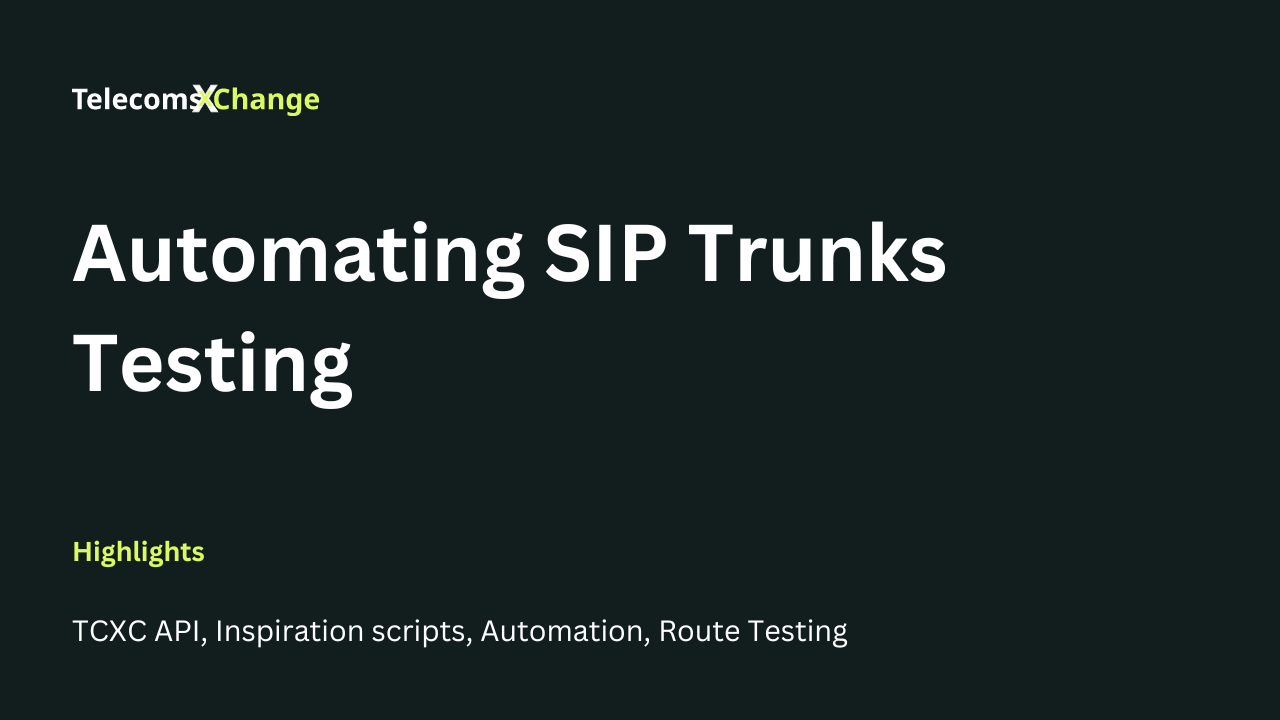Automate SIP Trunks Testing using Python & TelecomsXChange API
Last week, we shared insights into automating essential carrier relations tasks like route search, establishing interconnections based on target rates, TT escalation, robotic selling of virtual numbers, and marketing. Today, we continue on our journey of automation in the telecom space by introducing a script that automates SIP trunk testing, an integral aspect of maintaining optimal service quality.
Testing SIP trunks is a crucial yet time-consuming task that telecom operators need to perform regularly to ensure the highest quality of service. Traditional manual testing demands significant time and is prone to human errors, which can affect the overall service quality.
To address these challenges, we have developed a script that automates the entire process:
1. 💼 Fetch SIP Providers: The script first retrieves a list of all SIP providers from the TelecomsXChange platform. It shows you all available providers in an easy-to-view format.
2. 🎯 Choose SIP Provider: Once the providers are listed, the script prompts you to choose a provider for testing. You can simply enter the friendly name of the SIP provider instead of their technical identifiers, making the process more intuitive.
3. 📞 Get Test Numbers: The script then fetches valid real phone numbers based on the country and network you want to test. You can enter your desired country and network, and the script will retrieve a list of numbers for testing.
4. 📞 Initiate Test Calls: With the selected provider and test numbers, the script initiates a test call, simulating a real-world call scenario. You can set specific parameters such as ‘Caller ID’ for the test calls.
View the script source code on GitHub:
https://github.com/TelecomsXChangeAPi/automation_scripts/blob/main/Automate_Route_Testing.py
The beauty of this script is its flexibility. The first leg of the call can be set to a fixed inbound number if you wish, which could be routed to an Interactive Voice Response (IVR) with recording for further analysis. Or, you could direct it to a number that points to a more advanced SIP testing and analytics platform like SIPFront.
Adopting this automated process can save your engineering team substantial time each week, especially if you’re a larger telecom operator dealing with hundreds of SIP providers and frequent tests. This allows your team to focus on tasks that add more value to your operations.
